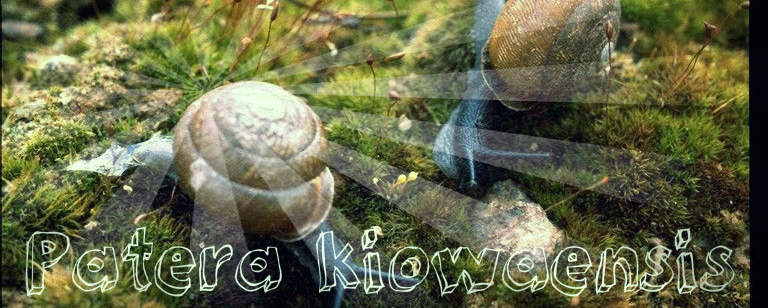Anatomy
Snails are found in the Class Gastropoda. This class is specifically known for torsion, which is the twisting of the visceral mass where the head and anus are on the same side of the body (Myers and Burch). Usually a snail species will have a coiled shell that is used for protection, which is mostly made up of calcium (Hickman).

The snail species Patera kiowaensis has not had
a lot of research done, however much of the research has been done
by Pilsbry in the late 1800’s. According to him, the snail Patera
kiowaensis, has a shell that is brown in color with five whorls,
which are turns or spirals in the shell. He also explains that the
aperture of the snail, which is the opening of the shell, is
significantly wider than the shell is tall. To get a sense of the
size of the snail here are some measurements that Pilsbry had made
and recorded of Patera kiowaensis in his book.
Measurements of Patera kiowaensis (Height and
diameter in mm)
|
Height |
Diameter |
Whorls |
|
8.7 |
14.5 |
5.3 |
|
7.6 |
15.1 |
5.3 |
|
7.6 |
14 |
N/A |
|
9.0 |
15.3 |
5.5 |
|
8.9 |
15.6 |
N/A |
The height, diameter, and whorls, of these 5 sampled species of Patera kiowaensis are consistent, which shows that the snails do not get very large.
Learn what Patera kiowaensis eats on the Nutrition page or Go to Home Page


